
Bosch POF 1400 ACE – My first Router, detailed review with photos
I bought a Bosch POF 1400 ACE plunge router as my birthday present a month back and have used it for a few weeks now. It was a bit pricier than other options, but now I think it was totally worth it. This is my first plunge router and router at all for heavier work so it’s written as a beginner in routing. So my review is probably very biased since I have not used any other plunge routers.
I included closer photos and main measurements that might help you decide when considering to buy this Bosch router.
Main features and characteristics
You can check the technical info on the official website. Here is a quick recap of the features included. Someone posted also a full manual online.
- Soft start feature
- Constant speed controller (electronic)
- Maximum plunge depth 55 mm
- Transparent dust guard and extraction port (inner diameter 35mm)
- Speed control (11 000 – 28 000 rpm)
- Routing depth fine adjustment (0.1-millimeter scale). Overall it was possible to fine-adjust a total of 15mm end to end.
- Parallel guide
- The circular cut feature is present by using the parallel guide and provided center pin.
- Integrated spindle lock for quick tool change
- Rotating depth selector/turret stop
- Quick release template guide (SDS system)
- Working LED light (turns on when the motor started)
- The power cord for my unit was a little bit over ~2.5 meters (8.2 feet) long
Soft start feature gives a very smooth start. It does not jerk in your hands because of rapid acceleration when started. Constant speed controller holds motor speed constant by giving more power when needed. Can’t imagine a router without these features.
Box size and what was included
The router was packed in a sturdy plastic casing with handle and latches for firm locking. It was surprising to me and I totally love it – no throwaway cardboard box. Closing latches could be a bit smoother. I have to kick them to close them. It features a screw and butterfly nut in the bottom to hold everything in place while transporting. There is also some spare room in the casing so I can keep some router related stuff in there. Like a box of routing bits. Total weight (router + box + additions) was around 7.9kg (17.42 pounds) and approximate measurements are following.
- Height: 34 cm – 13.36 inches
- Width: 40.1 cm – 15.79 inches
- Depth: 21.3 cm – 8.38 inches
By default, it came with the following additions included (year 2018). It was bought in Europe so I am not sure about included stuff on other markets.
- 3 x collets – for following diameters: 1/4 inch, 6mm, and 8mm (There was no 1/2 inch collet)
- parallel guide with a circle cutting pin
- 8mm straight bit for 8mm collet (cutting edge length 19mm)
- spanner to change router bits
- 17mm Template guide
- Rolling edge guide (or how is that called?)
Does POF 1400 ACE fit a 1/2 inch collet?
There is no 1/2″ collet included and for me, it seems it would be not possible to fit anything bigger on the spindle anyway than 8mm collet sleeve. I made a quick mockup with a ruler to demonstrate it. As seen from 8mm collet- it’s sleeve is already pretty thin. A 12mm collet (1/2 inch) would not have room to fit. Orange lines on the image (start of the thread) themselves are around 12mm- not to mention it gets tapered inside.
As far as I know, there are no such adapters that address this problem? If anybody knows- please let me know.
Router measurements
This may be too detailed, but you never know. Maybe someone is planning a new machine for a router table and wants to know dimensions? There were many points to measure so I made this picture instead and numbered some measures for easier referencing.
Dimensions I got measured were the following (close approximates).
- 1) Min height: 24.5 cm – 9.65 inches and max height: 30 cm – 11.81 inches (this is with a base plate which is 5 mm itself)
- 2) Width: 27.7 cm – 10.9 inches
- 3) Depth (to dust extraction port): 17.8 cm – 7.01 inches
- 4) Depth (to handle): 15.3 cm – 6.02 inches
- 5) Depth (to fence guide): 14.1 cm – 5.55 inches
- 6) Base plate diameter: 16.2 cm – 6.38 inches
Power switch for router table use
It’s possible to press button permanently down when using it under a router table for example. There is no “safety feature” implemented. When “on-off” button is pushed before plugged into AC mains – it starts to work. Here is a quick hack solution with a zip-tie. Circumference of the handle measured such way is a bit over 15cm (5.9 inches). So zip-tie minimum effective length must be a bit over 15 cm.
I don’t know is it possible to adjust the speed also with some external voltage/trimmer regulator. I guess it’s not since it has an internal constant speed controller. I suppose it will try to keep up to the pre-selected speed. Exactly what it was designed to.
What are the minimum and maximum diameter when routing circle?
There is no info on this router that it has circle cutting ability built in. The circle can be cut if the parallel guide is flipped upside down and the center pin is bolted in. Maybe it’s an obvious feature for others, but it was not for me. There was no clue on the box about circle cutting feature. Minimum circle I was able to measure was exactly 18 cm (radius 9cm). The first time I measured longer radius, but then found out a clever design of the depth selector. By rotating it to a particular position you can gain few extra centimeters or so, but effectively disabling selector during those cuts.
Maximum radius for cutting circle I measured was 40cm so maximum diameter would be 80cm. The tip of the center pin for circular cutting is 4mm in diameter and 7mm long.
Seven position turret stop
I was not able to determine very accurately how much is the difference between the maximum and minimum stop depth. But it’s somewhere near 3mm (almost 1/8 inches) per stop (overall 22mm with 7 positions). I use this lot already to do multiple passes when routing. It allows to quickly set the depth increments until I reach the desired cutting depth. But this rotating depth selector has no set screws what some routers have. But not sure is it needed at all.
Parallel guide
Maximum I was able to adjust to was 43 cm. Rods are connected with screws – so it’s possible to flip the guide however you like. As you can see from the picture- it’s a simple guide. No horizontal fine adjustment or anything else present.
It also has some kind of edge guide with a roller that can be attached to the parallel guide. I am not sure how this is called, but the picture says it all.
Fence guide and base plate
Distance from fence guide edge is 59 mm which is 2.322 inches. The base plate is attached with standard M4 (4 mm) threaded screws.
Anything negative?
Since Bosch POF 1400 is my first router I really can’t say anything negative about it. I just don’t have any comparison.
People have complained about the spring being too strong making it hard to adjust the depth by hand. For me, it is maybe a bit stiff. Fine adjustment helps us out here. This is probably the case for Bosch POF 1200 AE which has not fine adjustment.
Compared to other comparable routers this does not come with horizontal fine adjustment (for parallel guide). This would be actually also a great feature.
You can check reviews and prices on Amazon. There are also a few negative reviews also, but nothing very common stands out.
Overall impression by far is very positive
My emotions can be summed up by questions instead. How did I live without a router so far? It’s an awesome addition to my toolbox. If you are in the process of buying your first plunge router I can recommend Bosch POF 1400 ACE. I have used it only for a few projects and a few weeks, but I am impressed by the creative possibilities I have now. I can’t actually imagine router without most of this feature this one came with. If you are buying your first – I totally recommend spending a little bit more.
Recommendations
If it’s your first router I have a few recommendations.
Get a waste board and few clamps to hold down your stock. Didn’t’ feel good to do something directly on the kitchen table (or any table).
I instantly developed a strong urge that I need a router table. Every cool kid has and builds one. But I think it totally deserves this buzz. Probably will build mine soon. Like I built a circle cutting jig.
Get a box with different router bits for playing around. No need for big variety or expensive ones from day one. You can start buying better bits for ones you actually use when you know what you need.
Get some nice straight stock to use it as a fence guide. I use a fence guide to make nice straight cuts. I have used a jigsaw for these cut’s, but those never turned out good since blade can bend. But with router results are excellent.
Do you have any questions about Bosch POF 1400 ACE?
What essential did I miss? Maybe some close up photo? Did I answer all the major questions you had about this router? If not- feel free to drop me a comment. I try to answer them and add information into this review to make this article better and helpful for others.
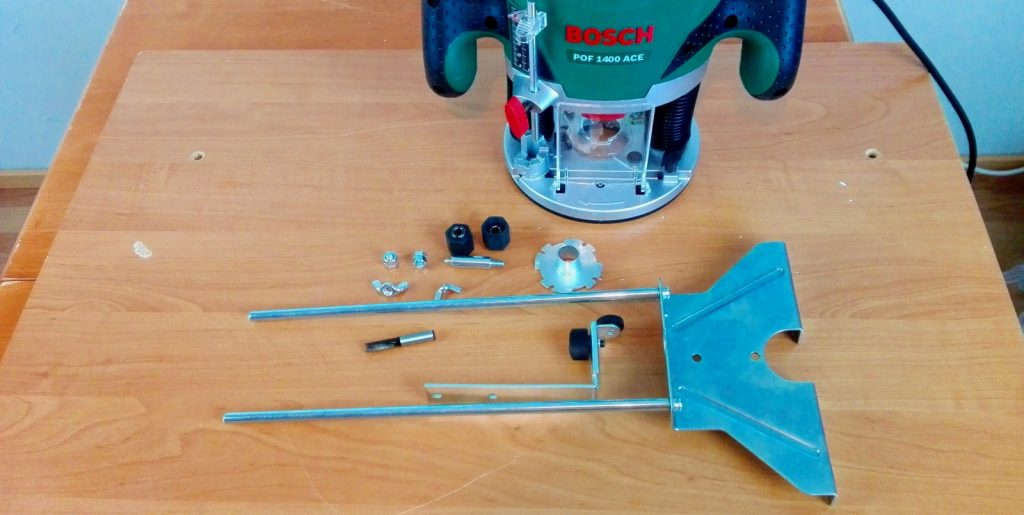
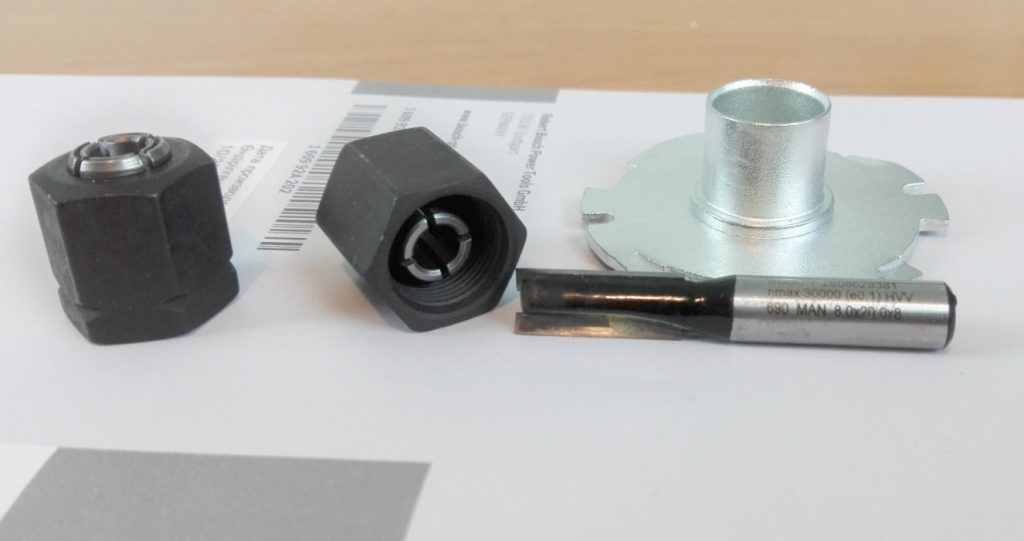
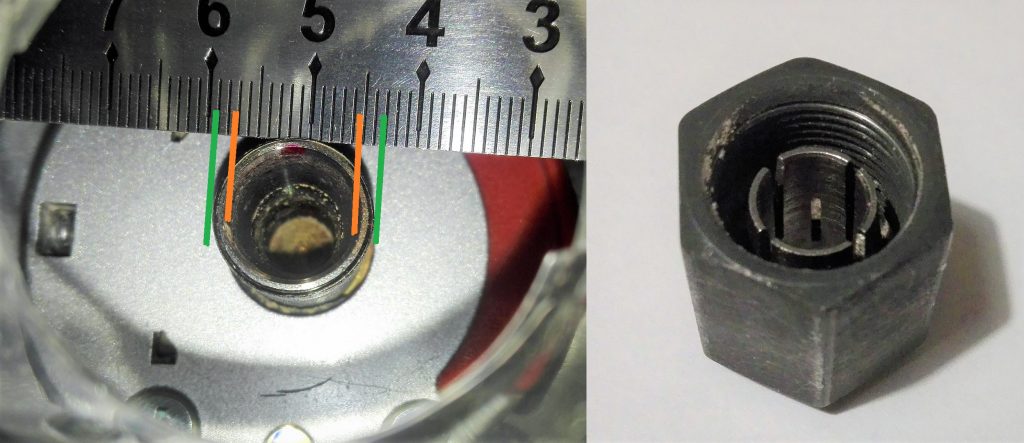
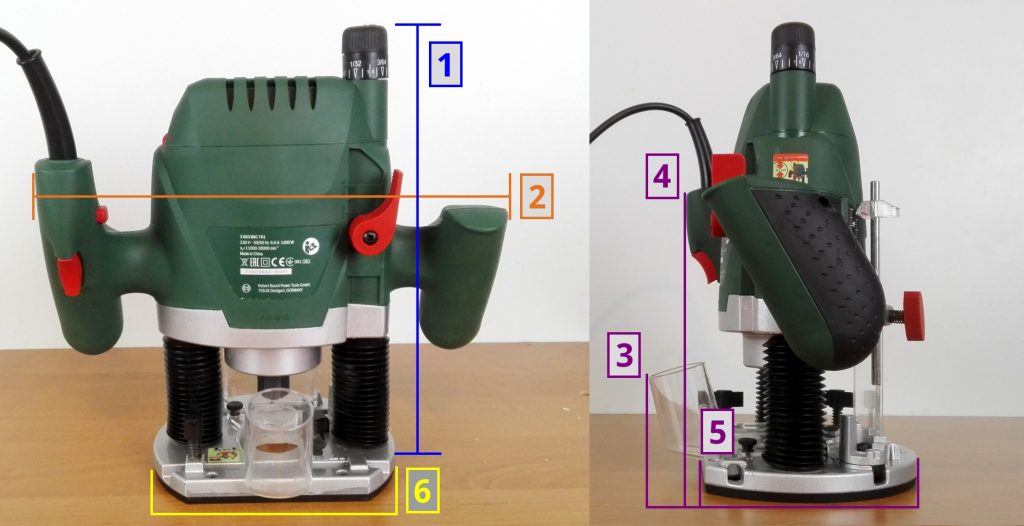
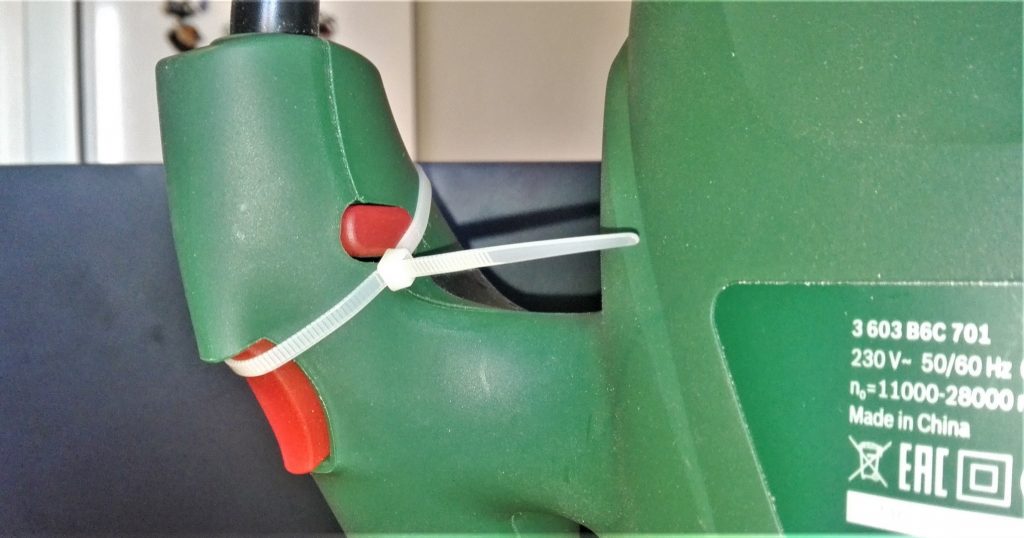

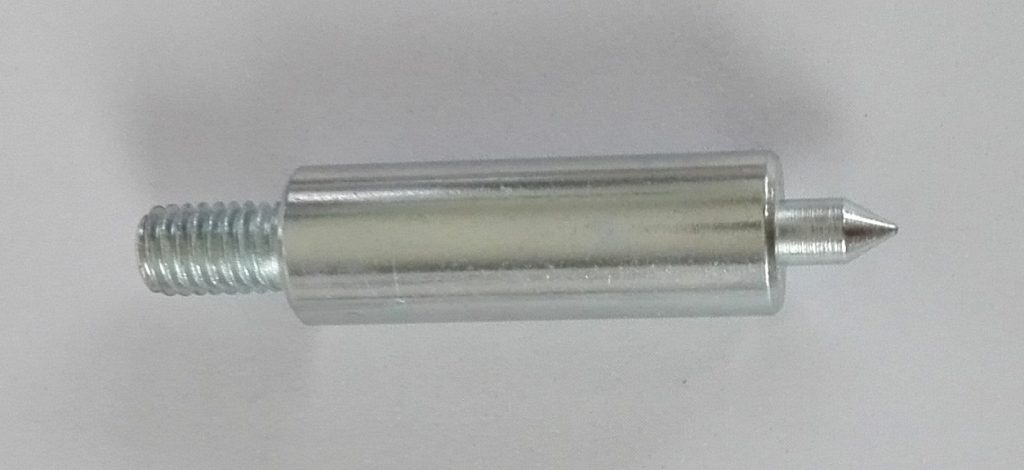
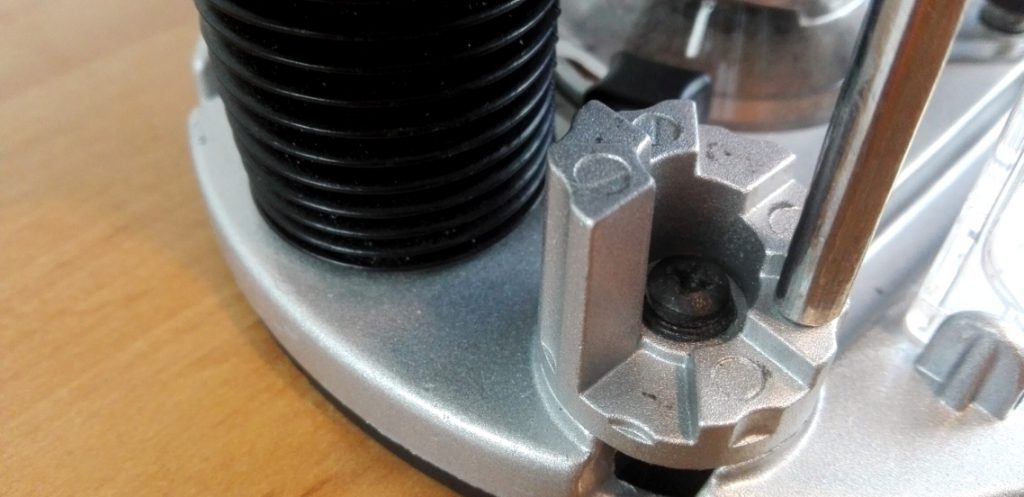
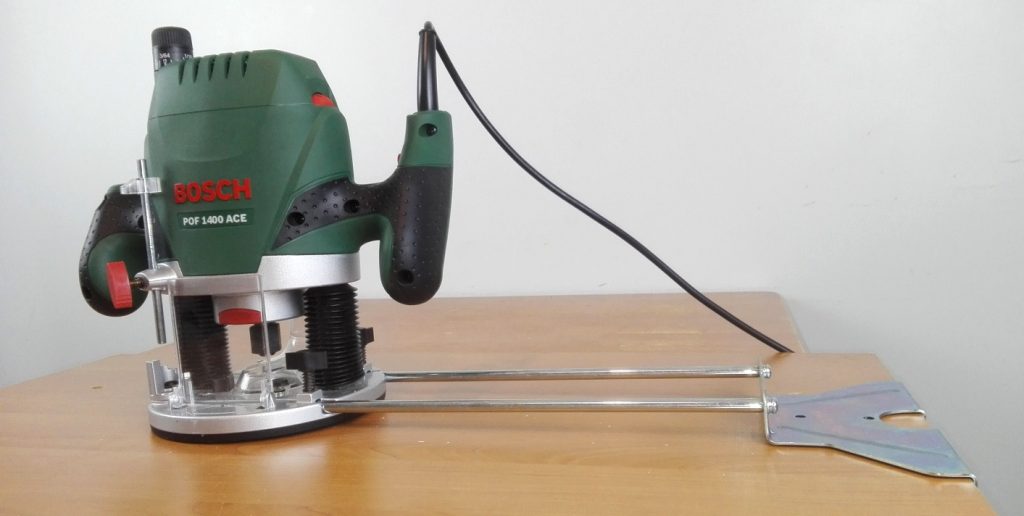

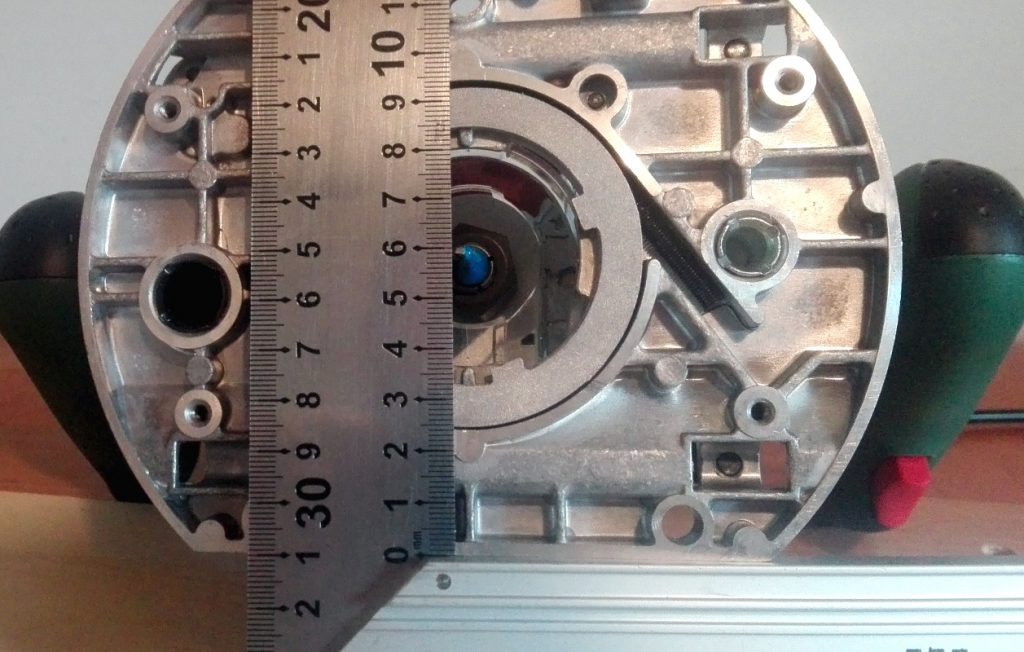
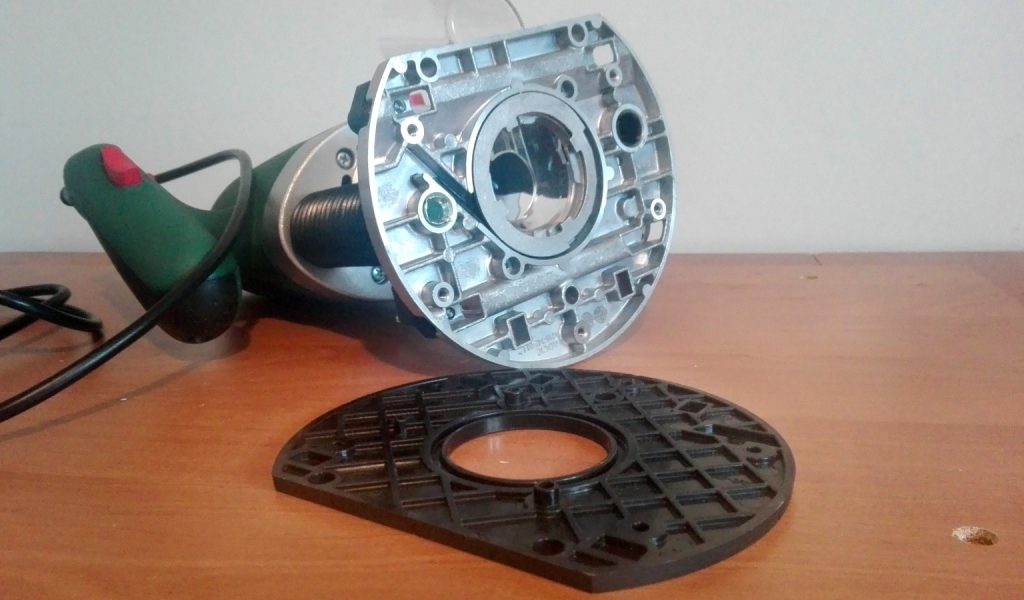



how can I use it with 1/2 inch bit and wat kind of alumnum pleat I can use for the table of 1400 ace
Not sure about the aluminum plate and what you are asking me. But it seems not to support and even fit 1/2 collet for 1/2 router bits. I added some photos and section about 1/2 collet into the article. LINK
It’s possible to take an expending adapter 12.7m to 12.7m and trim the router side of it to 8mm… (there’re several methods doing that)
BUT, this outer not made to hold 12.7mm bits not by mistake.
12.7mm (1/2”) bit need more power (1800w+) doing what I wrote above and using heave bits can cause damages to the router moreover it can fly out of the collect and cause damage to the user – not advised – get a router that already built for 12.7mm bits
Hi! Thanks for the review, it’s great. I’m a beginner about to buy this router, but I have a really simple question that I can’t seem to find the answer, I’ve watched tons of videos but no review mentions it.. I just want to know if I can start a hole in the center of the wood, let’s say if the wood is 3 cm thick, I’d like to make a hole 2 cm deep. Can I just measure 2 cm, start the router and press down to make the hole? Or do I first need a drill for this? I hope the question makes sense.
Thanks!
Hi. It’s a perfectly normal question. It actually depends on the bit you are using. Check out the first paragraph here and picture on the right -> https://www.woodcraft.com/blog_entries/spiral-router-bits-vs-straight-router-bits.
This router comes with an 8mm straight bit. But from my experience, it’s still possible to (plunge) cut straight down with it. Check out this quick video I made: https://www.youtube.com/watch?v=L00sf6abZz4 I used that 8mm straight cut bit there for the plunge cut.
Crystal clear!! Thanks for the answer, this was exactly what I wanted to know. Cheers!
Hi Janar,
Thanks for this review. I am considering this router as my first such of tool in my tiny workshop so I appreciate this article. I have some question in regards to shank diameters. Is is possible to use 1/8in (3.175mm) collet and if yes, would I need some different nut?
Regards
Marko
Good question. It seems that there is no actual collet for it, but the solution is to use an adapter. Try googling “1/8” collet reducer” or “1/8” collet adapter” for instance.
For example, this one pops up: https://www.inventables.com/technologies/collet-adapter or https://robosavvy.com/store/1-4-inch-to-1-8-inch-collet-adapter.html I guess these work with Bosch also.
Here is a short discussion about these adapters: http://www.cncsharktalk.com/viewtopic.php?f=2&t=5723
Unfortunately, I am not sure is there a 1/8” collet available for this router.
Thanks for quick respond, Janr.
I will definitely check these links.
Regards
Marko
How long he can be ON without overheating?
I am not sure. It probably depends on the load also. Is this question related to the router table build?
Good review, thanks. I am just starting out with the router and wonder how the router is kept on when mounted on a router table, if (as the manual says) one must keep pressing the ON button to keep the router going. This is not consistent with being able to manipulate a piece of wood on the top of the table, or is it?
Thank you.
As far as I know – this router does not have any systems that support running it under a table. But I used a zip tie to keep “on-off” switch constantly in “ON” state. This router starts when the button is pressed already and you plug it into an AC mains outlet. At least the EU version.
Thanks for the information I’ve the 1200, nice product.
I ordered by mistake 12.7mm bit with collect…it didn’t fit of course , I found your page afterwards.
It might be nice to get the measurements of the lowest point that the collect can get and also the width of the base plat.
Have you tried to use this in a router table witha router lift and if so which one?
I have not yet used with any router table yet (and I would build it by myself anyway).
Hi,
As i used this router some 1 year and few i can say that the locking mechanism has failed and cannot keep depth . I tried the tricks from internet but the pipe used is too thin to hold the ground… unfortunately.
Maybe swapping it for a full rod but i do not know if you can find the right size.
KR,Florin
Hi Janar,
I’ve used this router sparingly; lately I’ve been straightening boards, & have noticed a small “step” at times. Investigating the tool, I realized that, when pressing on the right hand side handle, it has a bit of downward movement, while the left one doesn’t.
Have you experienced the same?
I can’t find any references to this very small but bothering flaw, & there doesn’t seem to be a way of adjusting this slight error, save by very carefully applying the down pressure in an even way, any feedback would be welcomed, thanks!
I also use this tool for this, but I have not yet noticed this problem with my tool.
I am a long time user of an Elu router that has now seen the end of its days. I am used to a very smooth and accurate downward plunge action, i.e. no horizontal / tilting play while increasing the plunging depth while the locking mechanism is disengaged. Is there any noticeable play in the action of this router?
Sorry for the late answer, but I can’t tell if it has been getting any worse over the years. Also, I am not using it very heavily.
I would be really grateful if you could include info about the distance and placement of the screw holes in the baseplate, so I can determine which table insert I should buy for my diy router table.
I’m using Bosch POF 1400 ACE for few year and in general was happy,
But recently when I needed to use a guide bushings I discovered that there is a backlash between the plate and bushing.
Also in my router the mill is not in the center of the plate and there is no way to center it.
Thank you for your comment.
Hey! I just got this router as my first and I like it on a first sight. However, the instruction is horrible and I would like to ask you if you can explain step by step how to set up and make fine tune adjustments? Thanks!